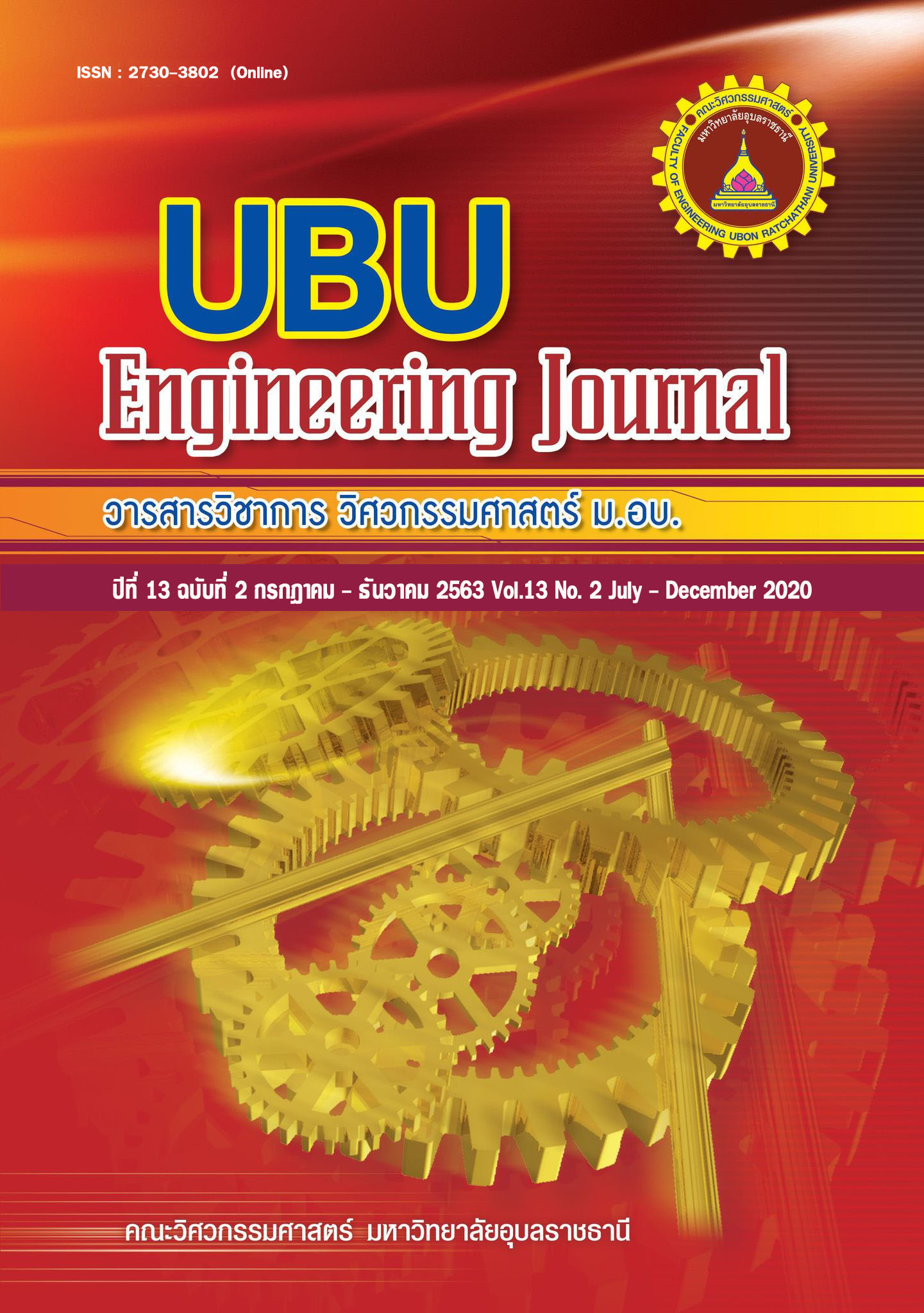Weight Loss during Determination Analysis of Total Suspended Solids by Microwave
Main Article Content
Abstract
The purpose of this quasi-experimental research was to determine the percentage of weight loss in volatile suspended solids during the process of total suspended solids analysis by microwave. The electrical energy was also compared between standard method and microwave with decreased costs. The result showed that the total suspended solids analyzed by 800-watt microwave at High level with the duration periods of 2, 4, 6, 8, and 10 minutes provided the weight loss of total suspended solids at 0.9, 1.4, 3.3, 4.1, and 4.5 percent, respectively. The electric energy consumption for total suspended solids analyzed by microwave was 0.005 - 0.026 THB/sample, while the cost of the standard method was 0.050 THB/sample. For total suspended solids analyzed per day, the microwave method was equal to the standard method when applied for 2 microwaves to 1 oven, thus decreasing the cost of oven purchase about 50,000 – 60,000 THB.
Article Details
References
[2] Jones DA, Lelyveld TP, Mavrofidis SD, Kingman SW, Miles NJ. Microwave heating applications in environmental engineering—a review. Resources, Conservation and Recycling. 2002;34(2):75-90.
[3] Tata A ed., Hospital waste sterilization: a technical-economic comparison between radiation and microwaves treatment technologies - Part two. 1995; Italy: C.I.P.A.
[4] Yu Q, Lei H, Yu G, Feng X, Li Z, Wu Z. Influence of microwave irradiation on sludge dewaterability. Chemical Engineering Journal. 2009;155(1):88-93.
[5] Vongpradubchai S, Rattanadecho P. Microwave and Hot Air Drying of Wood Using a Rectangular Waveguide. Drying Technology. 2011;29(4):451-60.
[6] Association of Official Analytical Chemists. Official Methods of Analysis. Methods 7.007 Moisture in Animal Feed. 15th ed. Gaithersburg, M.D.: AOAC; 1990.
[8] American Public Health Association, Water Environment Federation, American Water Works Association. Standard methods for the examination of water and wastewater. Methods 2540 C Total Dissolved Solids Dried at 180°C. 23rd ed. Washington, D.C.: APHA-AWWA-WEF; 2017.
[9] American Public Health Association, Water Environment Federation, American Water Works Association. Standard methods for the examination of water and wastewater. Methods 2540 A Introduction. 23rd ed. Washington, D.C.: APHA-AWWA-WEF; 2017.
[10] Charoenphun N, Meemuk N. Effects of Different Blanching Methods on Quality of Orange Sweet Potatoes. Thai Science and Technology Journal. 2018;26(6): 981-992.
[11] American Public Health Association, Water Environment Federation, American Water Works Association. Standard methods for the examination of water and wastewater. Methods 2540 E Fixed and Volatile Solids Ignited at 550°C. 23rd ed. Washington, D.C.: APHA-AWWA-WEF; 2017.
[12] Sittiwong W. Study of Hot Air Flow Behavior using EasyFEM Simulation and Shadowgraph Techniques. UBU Engineering Journal. 2015;8(1): 37-50.

